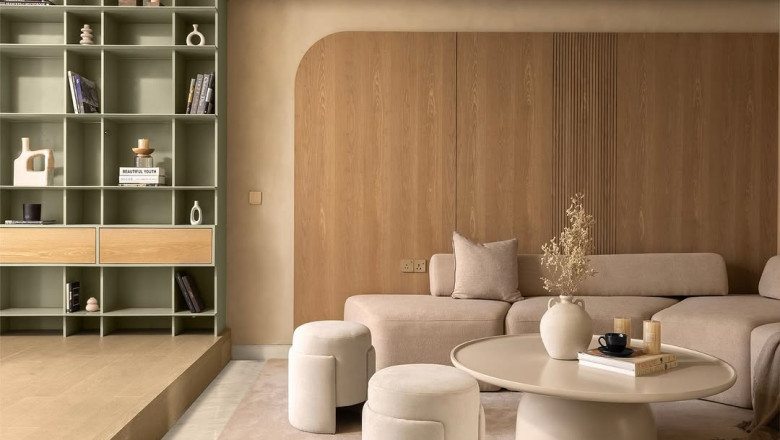views
When it comes to home renovation, choosing the right material can make all the difference. Micro cement has become a popular choice for homeowners and professionals alike, thanks to its versatility, durability, and sleek finish. Whether you’re updating floors, walls, or countertops, micro cement and micro concrete offer a modern alternative to traditional materials. In this post, we’ll explore the key advantages of micro cement for home renovation, backed by expert insights and practical tips.
What Is Micro Cement and How Is It Different from Micro Concrete?
Before diving into the benefits, it’s important to understand the basics. Micro cement is a thin coating made from a blend of cement, polymers, additives, and mineral pigments. It’s applied in layers over existing surfaces to create a smooth, seamless finish.
Micro concrete, on the other hand, is similar but typically used for thicker applications and more structural purposes. Both materials share qualities like strength and flexibility but micro cement is preferred for decorative finishes due to its thin application and ease of use.
Key Advantages of Micro Cement for Your Home Renovation
1. Versatility Across Surfaces
One of the biggest advantages of micro cement is that it can be applied to almost any surface. Whether it’s concrete, wood, tiles, plasterboard, or even metal, micro cement adheres well and creates a unified look.
Practical tip: Use micro cement to unify different rooms by applying it to floors and walls for a seamless flow, which can make spaces feel larger.
2. Thin and Lightweight Application
Micro cement requires only a few millimeters in thickness, meaning it won’t add bulk or change door heights or thresholds. This is especially useful in renovations where altering existing structures is costly or impractical.
Expert insight: Architects often recommend micro cement when space-saving is critical, as it provides a durable surface without the need for heavy structural changes.
3. Durability and Resistance
Despite its thin layer, micro cement is highly durable. It resists cracks, impacts, and wear, making it ideal for high-traffic areas like kitchens, bathrooms, and hallways. Additionally, micro cement is water-resistant, especially when sealed properly, making it perfect for wet areas.
Real-world example: Many boutique hotels use micro cement in bathrooms and showers because it combines beauty with long-lasting performance.
4. Customizable Aesthetic Appeal
Micro cement comes in various colors and finishes, from matte to glossy, allowing homeowners to customize their spaces easily. The smooth, modern look fits well with minimalist, industrial, and contemporary designs.
Pro tip: Add pigments to the micro cement mix for unique shades or incorporate stencils and textures for personalized effects.
5. Easy Maintenance
Once sealed, micro cement surfaces are easy to clean and maintain. They don’t require special products—regular sweeping and damp mopping keep the surfaces looking fresh.
Maintenance checklist:
-
Clean spills promptly to avoid staining
-
Use non-abrasive cleaners
-
Reapply sealant every few years for best protection
How to Use Micro Cement for Home Renovation Step by Step
If you’re considering applying micro cement yourself or hiring a professional, here’s a quick overview of the process:
-
Prepare the Surface: Ensure the existing surface is clean, dry, and free from dust or grease. Repair any cracks or holes.
-
Apply Primer: A primer enhances adhesion and prevents moisture issues.
-
Mix Micro Cement: Follow manufacturer instructions, adding pigments if desired.
-
Apply First Layer: Use a trowel to spread the first thin layer evenly.
-
Let Dry and Sand: Allow to dry completely, then sand lightly for smoothness.
-
Apply Additional Layers: Usually 2–3 layers are needed for strength and finish.
-
Seal the Surface: Apply a protective sealant for durability and water resistance.
Why Choose Micro Cement Over Traditional Materials?
Traditional tiles, wood, or stone can be heavy, expensive, and difficult to install or replace. Micro cement offers a sleek, modern look without the hassle of demolition or complex installation. Plus, its seamless finish means no grout lines, reducing dirt buildup and maintenance effort.
Environmental Benefits
Micro cement is eco-friendly because it can be applied over existing surfaces, reducing construction waste. Its longevity also means less frequent replacements.
Final Thoughts
Micro cement and micro concrete are revolutionizing home renovation by offering practical, stylish, and durable solutions. Whether you’re a beginner tackling a DIY project or an expert looking to recommend a reliable material, micro cement provides a versatile option that meets both aesthetic and functional needs.
If you want a renovation material that combines beauty with strength and ease, micro cement is worth considering. Follow the tips above, and you’ll transform your space with confidence.






















Comments
0 comment